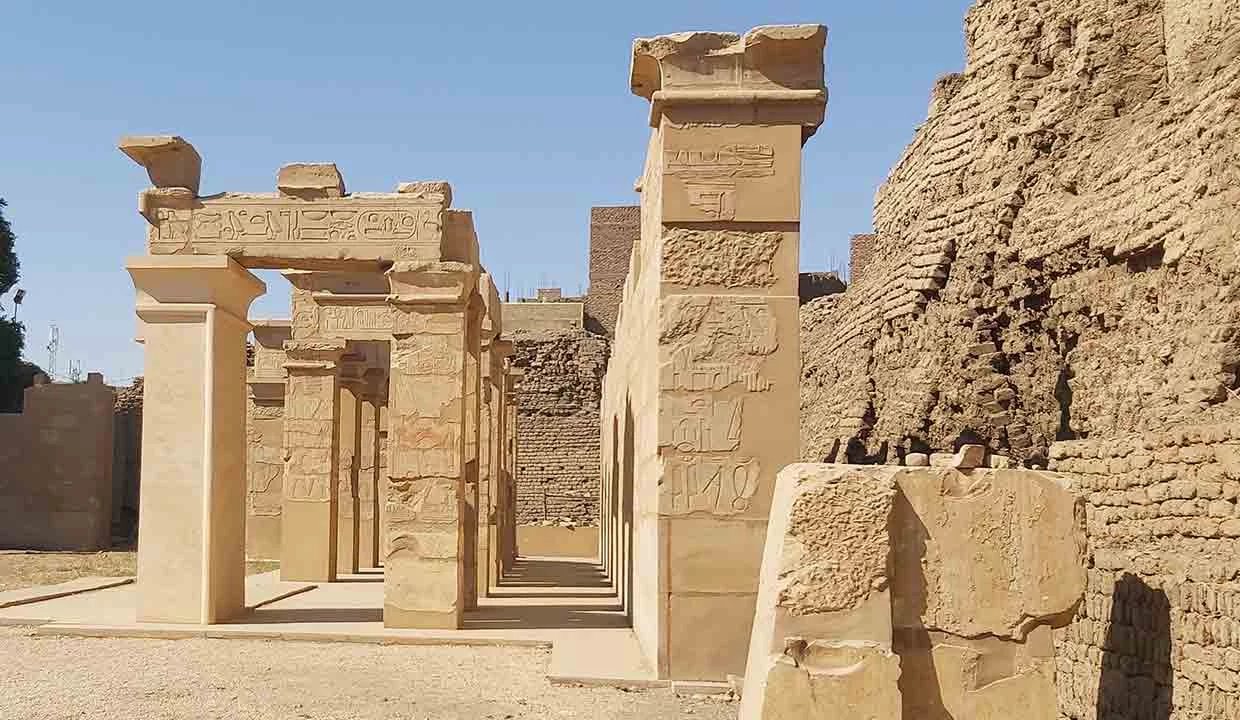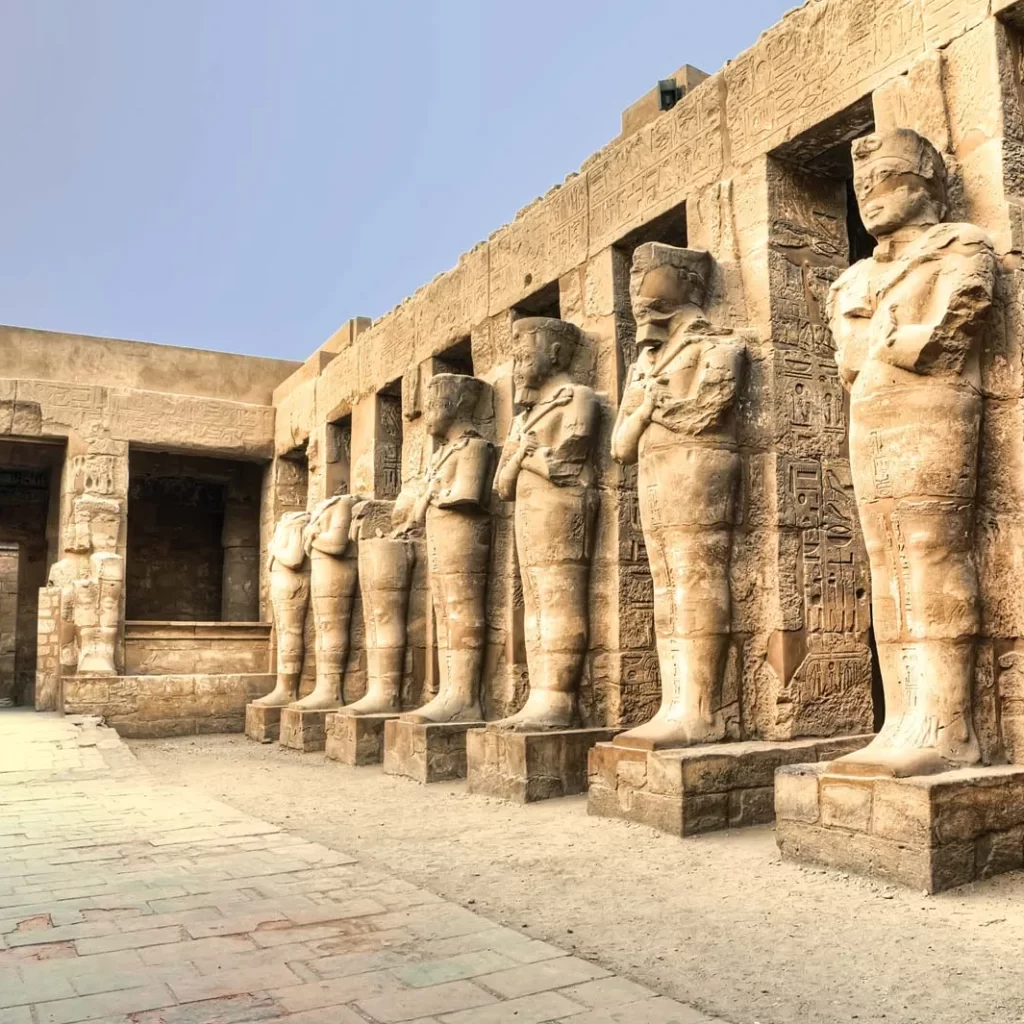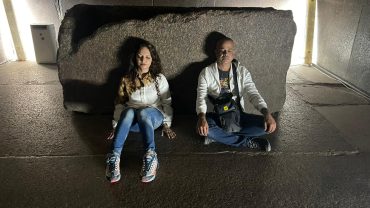What is Karnak Temple?
Karnak Temple, standing on the east bank of the Nile in Luxor, Egypt, is like a giant history book that tells the story of ancient Egypt. The Karnak Temple Complex, a sprawling testament to ancient Egypt’s magnificence, unfolds its historical narrative along the east bank of the Nile Built over 4,000 years ago.
This massive complex is a fascinating trip through time, showcasing the incredible architecture and cultural richness of one of the world’s most amazing civilizations.
As you explore Karnak Temple, colossal columns and towering statues guide you through the different chapters of Egyptian history. Each section, built by different pharaohs over the years, paints a picture of their beliefs, daily life, and impressive achievements.
Beyond its impressive appearance, Karnak Temple was a bustling center for religious and cultural events. Festivals and ceremonies took place here, reinforcing the power of the pharaohs and ensuring prosperity for Egypt.
Walking through the temple today, you’re not just a spectator; you become part of a timeless journey. The echoes of ancient rituals surround you, connecting you to a civilization that shaped the world. Karnak Temple invites you to uncover its mysteries, embrace the past, and witness the enduring legacy of ancient Egypt.
Historical Marvels of Karnak Temple

The story of Karnak Temple unfolds like a chronological odyssey, with each section revealing a different chapter in the rich tapestry of ancient Egypt.
From the monumental entrance adorned with colossal statues to the intricate reliefs that line the pathways, Karnak is a testament to the enduring legacy of successive pharaohs who contributed to its construction.
As visitors transition through the temple, they traverse the sacred Hypostyle Hall, a mesmerizing space with towering columns adorned with hieroglyphics and intricate carvings.
This architectural marvel stands as a testament to the advanced knowledge and skill of ancient Egyptian builders. Consequently, these structures continue to awe and inspire, even millennia later.
Architectural Mastery
Karnak Temple’s architectural mastery is exemplified by the precision of its construction. The massive columns, reaching towards the heavens, showcase the ingenuity of ancient builders.
Each column, adorned with intricate hieroglyphics and detailed reliefs, tells a story of religious beliefs, mythological tales, and historical events.
The temple’s layout is not a random arrangement of stones; rather, it is a carefully planned and executed design that reflects the cosmological beliefs of ancient Egyptians.
The alignment of structures, the placement of statues, and the symbolism embedded in every corner contribute to the holistic understanding of Karnak as a sacred space.
Avenues of Sphinxes
Beyond its individual structures, Karnak Temple is intricately connected to Luxor Temple through avenues of sphinxes. The long processional paths, lined with these mythical creatures, create a symbolic link that transcends physical space.
This connection mirrors the ancient Egyptian belief in the harmony of the universe, where temples were not isolated structures but part of a greater cosmic order.
The Avenue of Sphinxes stretches for miles, a testament to the monumental scale of ancient Egyptian architectural projects.
Dedicated to the god Amun, Karnak Temple was not merely a collection of stones. But a living, breathing sanctuary for worship, rituals, and festivals. The sacred precincts housed numerous shrines and sanctuaries. Each is dedicated to different deities, contributing to the spiritual tapestry of ancient Egyptian society.
The rituals performed within Karnak played a vital role in reinforcing. The divine legitimacy of the pharaohs and ensuring the prosperity of the Egyptian kingdom.
The temple was a dynamic space where the earthly and divine realms intersected. The carved reliefs depict scenes of pharaohs engaging in religious ceremonies, emphasizing their connection with the gods.
Ongoing Discoveries
In the present day, Karnak Temple continues to be a focal point for archaeological research and exploration.
Ongoing excavations, conducted by dedicated teams of archaeologists continually unveil new discoveries. And shedding light on the intricacies of daily life, religious practices, and societal structures of ancient Egypt.
The ongoing nature of these endeavors ensures that the temple remains a dynamic and evolving field of study.
Visitor Experience of Karnak Temple
For modern-day visitors, Karnak Temple offers more than a static encounter with ancient stones. It provides a visceral journey through time.
Sunlight bathes the colossal structures in warm hues during the day. Shadows dance across the reliefs in the fading light of the evening.
The visitors can’t help but transport themselves back to an era when Karnak was a vibrant center of religious and cultural life. Walking through the temple’s corridors and courtyards.
The whispers of ancient rituals and the echoes of ceremonies that took place thousands of years ago surround them.. The sensory experience, enhanced by the play of light and shadow, creates an immersive connection with the past that goes beyond historical narratives.
Conservation of Modern Era
In the modern era, preserving Karnak Temple is a responsibility shouldered by dedicated conservationists. The site faces challenges from both environmental factors and the impact of tourism. Efforts to protect the delicate reliefs, massive columns, and sacred structures are crucial. And maintaining the integrity of this ancient wonder.
Conservation initiatives involve a delicate balance between allowing visitors to experience. The magic of Karnak and ensuring that the site remains intact for future generations.
As technology advances, conservationists employ innovation. The methods to monitor the impact of climate, foot traffic, and other factors on the temple’s physical state.
Karnak Temple’s Enduring Legacy

Karnak Temple is more than a collection of stones. It is a living testament to the ingenuity, spirituality, and cultural richness of ancient Egypt.
Its colossal structures, intricate reliefs, and symbolic connections to Luxor Temple. This reveals a civilization deeply connected to its gods and the cosmic order.
Explore on a journey through time, connecting with a history that has left an indelible mark on the banks of the Nile. The ongoing archaeological endeavors, combined with conservation efforts. Ensure that Karnak Temple remains a captivating window into the ancient world for generations to come.




Comment (0)